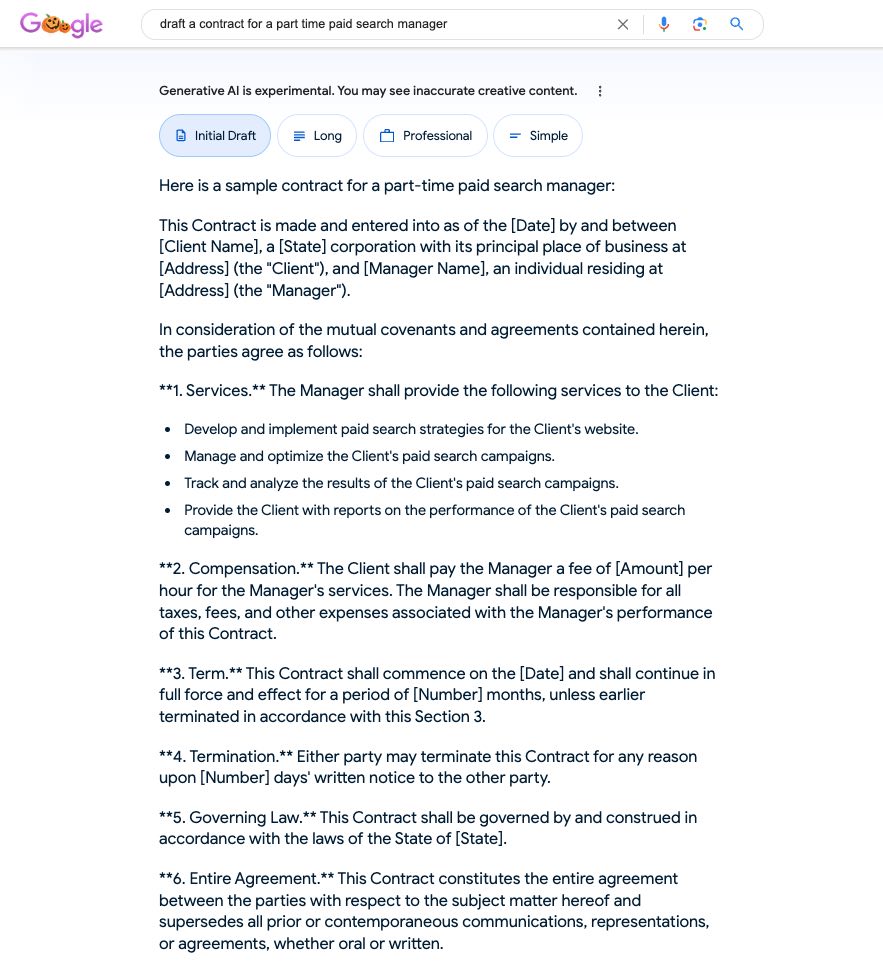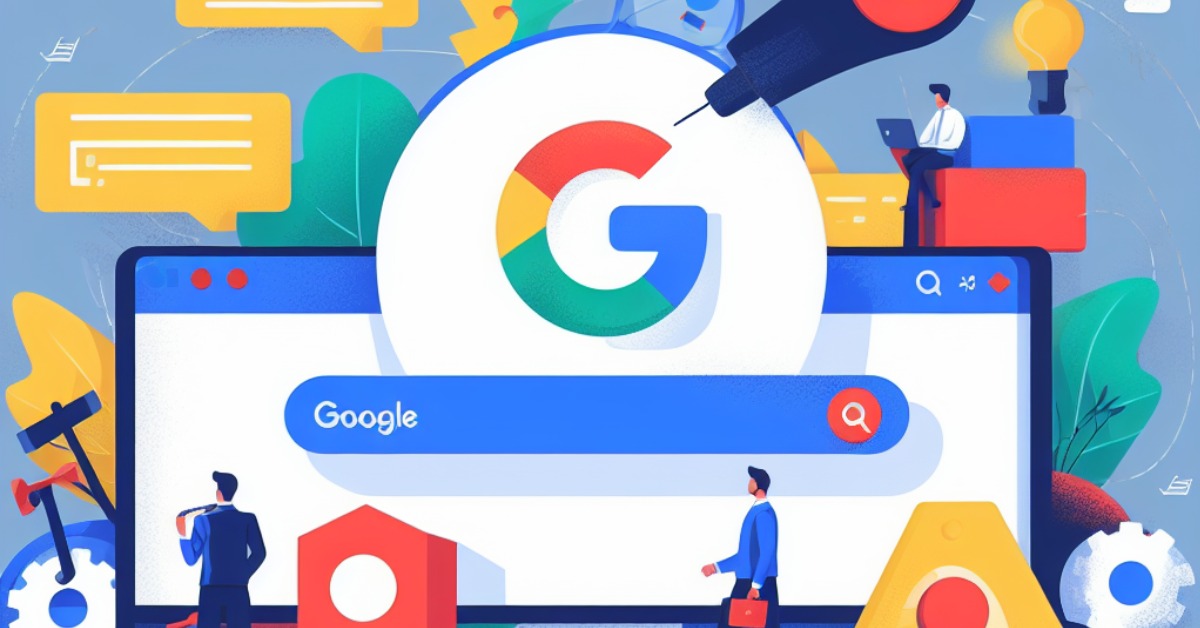Welcome to the October 2023 Marketing News Recap! This is the first in an ongoing series where I will summarize the most important news from each month.
In the ever-evolving world of digital marketing, staying on top of the latest trends and developments is crucial for success. This month, we dive into some exciting topics including Google Demand Gen, Search Themes for Google Performance Max Campaigns, IOS 17, and more!
Table of Contents
- Google Demand Gen
- Search Themes for Google Performance Max Campaigns
- Ads are Coming to Google Search Generative Experience
- The Latest Updates for Search Generative Experience
- YouTube Passes Netflix as Most Watched By Teens
- Google Ads Data Manager
- Spotlight Moments for YouTube
- Google AR Beauty Tools
- Amazon, Shopify, Ebay and AI
- TikTok Out of Phone Ads
- IOS 17 Impact on Marketing
- Conclusion
Google Demand Gen
Google launched Demand Gen campaigns worldwide on October 10th. Demand Gen builds on the features of Discovery campaigns while introducing new capabilities and inventory, most notably the ability to use Lookalike audience and the addition of YouTube Shorts placements.
Similar to Discovery campaigns the new campaign type includes placements in search, YouTube, Gmail, and the Discovery feed. For retailers, it allows the integration of product feeds to create personalized experiences by showing items based on user interests. Improved reporting features provide valuable insights and support creative optimization efforts. Furthermore, it introduces Lookalike segments that combine first-party data with Google’s interest signals to discover new customers.
A webinar is scheduled for November 14, 2023, where Google product experts will share tips and insights about Demand Gen.
Search Themes – Google Performance Max
Google has introduced a beta feature called “search themes” in Performance Max, allowing advertisers to provide guidance to Google AI for better search ad placements. This feature helps advertisers reach audiences they may not have have previously. Search themes enable advertisers to add information about their business or customers, enhancing campaign performance. It is particularly useful in scenarios where there may be gaps in AI learning, such as when landing pages lack information or when launching new products or promotions.
Key points about search themes:
- Advertisers can add up to 25 search themes per asset group.
- Search themes respect brand exclusions and account-level negative keywords.
- Search themes have the same prioritization as phrase match and broad match keywords in Search campaigns.
- Advertisers can view the search categories matched by their ads and access search term insights for custom date ranges.
Ads Are Coming to Google Search Generative Experience
Google is focusing on integrating ads with its AI-powered Search Generative Experience (SGE). The company is experimenting with new ad formats native to SGE, ensuring advertisers can reach potential customers along their search journeys.
On the company’s most recent earnings call Chief Business Officer Philipp Schindler reinforced the company’s commitment to advertisers.
“It’s extremely important to us that in this new experience, advertisers still have the opportunity to reach potential customers along their search journeys.”
– Philipp Schindler
It’s clear Google views AI-infused search as a long-term strategy and aims to evolve it over the next decade.
Updates to Search Generative Experience
Google is enhancing its search capabilities with generative AI features. Users can now create images with the help of generative AI in their search queries.
For instance, if you search for an image like “draw a picture of a cat wearing a beret and popping popcorn,” the AI will provide up to four generated images, along with descriptive details.
Users can further edit the descriptions to customize the images. This feature is designed to help users find visual inspiration.

Additionally, Google is introducing written drafts in its generative AI-powered search. Users can request the AI to help them draft content, such as notes to contractors.
These drafts can be easily exported to Google Docs or Gmail. Privacy protections carry over into this export function.

Both of these features are part of Google’s ongoing efforts to enhance the search experience and are currently available in English in the U.S. as part of an experiment within the Search Labs. Feedback from users is welcomed to further refine these generative AI capabilities.
YouTube Passes Netflix as Top Video Streaming Service for Teens

A new survey from Piper Sandler reveals that teenagers in the United States now watch more video on YouTube than on Netflix.
According to the survey, teens allocate 29.1% of their daily video consumption time to YouTube, surpassing Netflix for the first time which stands at 28.7%. This shift indicates increased competition in the streaming industry and underscores YouTube’s strong position as a free source of online video content.
The survey also suggests that evolving consumption habits and improving content on YouTube may be driving this trend. Netflix and YouTube dominate daily video consumption, with Hulu ranking third.
The survey, conducted with over 9,000 American teens, provides insights into youth spending habits and preferences. As far as social media platforms are concerned, TikTok was the favorite among 38% of teens, with Instagram leading in self-reported monthly usage. Teens reported spending approximately four and a half hours per day on social media, marking an increase from previous surveys.
Google Ads Data Manager
Google started rolling out Google Ads Data Manager with the goal of simplifying the management of first-party data used in advertising. It offers a unified interface that enables users to efficiently connect and use their first-party data in advertising solutions.
This platform reduces the need for engineers or analysts to duplicate tasks and custom queries when creating data connections. Google Ads Data Manager aims to make the process of leveraging first-party data for marketing more accessible, even to those without extensive coding knowledge.
In initial testing, users experienced enhanced conversions and more efficient lead onboarding.
This tool will become generally available in early 2024, helping users enable enhanced conversions and Customer Match across various partners while preserving core functionalities. The platform will also be extended to other advertising products in the future and allow users to connect data from various sources, including customer relationship management (CRM) systems and customer data platforms (CDPs).
As we get closer to the cookieless world the importance of investing in and effectively using first-party data to improve advertising performance will continue to grow.
YouTube Spotlight Moments
YouTube is introducing a new AI-powered advertising solution, Spotlight Moments, to help brands align with significant cultural moments and events. Spotlight Moments uses AI to identify popular and relevant videos related to specific cultural events. Advertisers can use this package to serve ads across content related to these events, with their ads being presented on a dedicated YouTube hub branded with the advertiser’s logo. This feature aims to provide advertisers with high visibility during important cultural moments.
Google AR Beauty Tools

Google has introduced new AR beauty tools for both shoppers and brands to enhance the online beauty shopping experience. Shoppers can virtually try on hair color and utilize AR beauty tools on mobile browsers. These tools aim to address the challenge of shopping for beauty products online due to their highly personalized nature.
Shoppers are increasingly using AR beauty tools to interact with beauty products. It’s reported that when AR is available, shoppers engage with beauty products 10% more. Google is expanding its AR beauty offerings to include hair color, enabling shoppers to preview different shades from brands like L’Oreal, Splat, and Revlon. Additionally, users can virtually try on foundation, either on models or themselves.
These AR features are now accessible through mobile browsers in the U.S., in addition to the Google app. AR lip and eye makeup will also be available on the mobile web soon.
Brands benefit from AR beauty tools as they engage shoppers more effectively. When consumers interact with AR beauty on Google, they tend to spend more time on the brand’s site and may take actions like researching or purchasing products.
Over 50 beauty brands, including both established brands and startups, offer AR try-on experiences on Google. AR beauty ads allow brands to showcase lip and eye products (with foundation to come) in a more interactive way within shopping ads.
These AR features aim to enhance the online beauty shopping experience for both consumers and beauty brands, providing a more engaging and interactive way to discover and try beauty products.
Amazon, Shopify, and Ebay Use AI to Write Product Descriptions
Amazon AI Tools
Amazon is harnessing the power of generative generative AI to simplify the process of creating engaging product listings for sellers.
These new AI capabilities reduce the workload for sellers by using large language models to generate comprehensive and compelling product descriptions, titles, and listing details.
Sellers need only provide a brief product description, and Amazon’s AI will generate high-quality content that can be refined or directly submitted. This not only saves time for sellers but also enhances the overall shopping experience for customers by providing richer and more complete product information.
Amazon introduced these generative AI capabilities at its seller conference, Accelerate 2023, and early feedback suggests that many sellers are utilizing the AI-generated content to streamline listing creation and improve their business success.
Shopify AI Tools
Shopify Magic is a suite of AI-driven features integrated into Shopify’s products and workflows to assist businesses in various aspects of store management. It leverages advanced AI technology to offer personalized, contextually relevant support in areas like store building, marketing, customer support, and back-office management.
- Automatic Text Generation: Shopify Magic’s automatic text generation uses AI to expedite content creation. By analyzing provided information, it suggests content for product descriptions, email subject lines, and headings in your online store. This feature relies on Large Language Models (LLMs), which understand human language by processing vast amounts of text data, allowing for various applications like content summarization and original content generation.
- Sidekick: Sidekick, an AI-enabled commerce assistant, enhances business operations by providing personalized and context-aware support across multiple tasks. It streamlines processes, improves store quality, handles time-consuming tasks, and aids in decision-making.
- App Review Summaries: Shopify Magic is also employed in generating app review summaries, helping merchants make informed decisions by providing quick insights into the suitability of various apps available in the Shopify App Store.
Ebay AI Tools
eBay is introducing an innovative AI-driven “magical listing tool” that utilizes artificial intelligence to analyze and extract details from images, making it easier for sellers to list items and providing buyers with more comprehensive information.
In the initial version, sellers could input a title and category, and the tool would use generative AI to create item descriptions. This feature has received positive feedback, with over 95% of users opting for AI-generated descriptions, resulting in high customer satisfaction.
The next version of the tool allows sellers to upload a photo, and AI automatically generates titles, descriptions, and important item information, streamlining the listing process. It addresses the challenge of providing extensive information, especially for complex products.
Additionally, eBay has improved its background removal tool to enhance image quality. The image-based listing tool has been in an employee beta phase and will soon be available to the public.
TikTok Out of Phone

TikTok has introduced “Out of Phone,” which extends the TikTok experience beyond mobile screens. Brands can leverage TikTok content on billboards, in cinemas, bars, restaurants, airports, gas stations, and more.
“Out of Phone” partners include Adomni, DIVE Billboards, GSTV, Loop TV, and others, expanding TikTok’s creative reach.
IOS 17 Effects on Marketing
iOS 17, Apple’s latest operating system update, released on September 18, 2023, introduces new privacy features that impact advertisers and how user behavior is tracked and analyzed.
One of the most concerning new developments for advertisers is the introduction of link tracking protection in iOS 17. This feature will eliminate user-identifiable parameters from URLs when users are browsing privately on Safari or using Apple’s Mail and Messages, potentially impacting tracking and analytics efforts.
Apple stated in their announcement “Some websites add extra information to their URLs in order to track users across other websites. Now this information will be removed from the links users share in Messages and Mail, and the links will still work as expected. This information will also be removed from links in Safari Private Browsing.”
Link Tracking Protection on IOS 17 will remove tracking parameters including:
| Platform | Parameter |
| Google Ads / Google Analytics | gclid |
| Microsoft Ads | msclkid |
| Google Ads | dclid |
| Facebook Ads | fbclid |
| Instagram Ads | igshid |
| twclkd | |
| Mailchimp | mc_eid |
It is important to note that Link Tracking Protection (LTP) exclusively functions within Safari’s Private Browsing mode and won’t affect links opened in the regular Safari browsing mode unless explicitly activated through the settings.
To adapt to these changes and future-proof campaign tracking:
- Use first-party data: As third-party cookies are phased out, collecting and using first-party data is crucial for effective marketing.
- Employ Apple’s Private Click Measurement (PCM): PCM is Apple’s privacy-preserving method for tracking ad campaign effectiveness while respecting user privacy.
- Embrace alternate measurement approaches: Combine qualitative insights, marketing mix modeling, and incrementality testing to gather comprehensive data.
Conclusion
Thank you for joining me in our first Marketing News Recap! If you have any questions or would like to discuss anything Google Ads, don’t hesitate to reach out. Here’s to your continued success in the ever-evolving world of digital marketing!


Leave a Reply